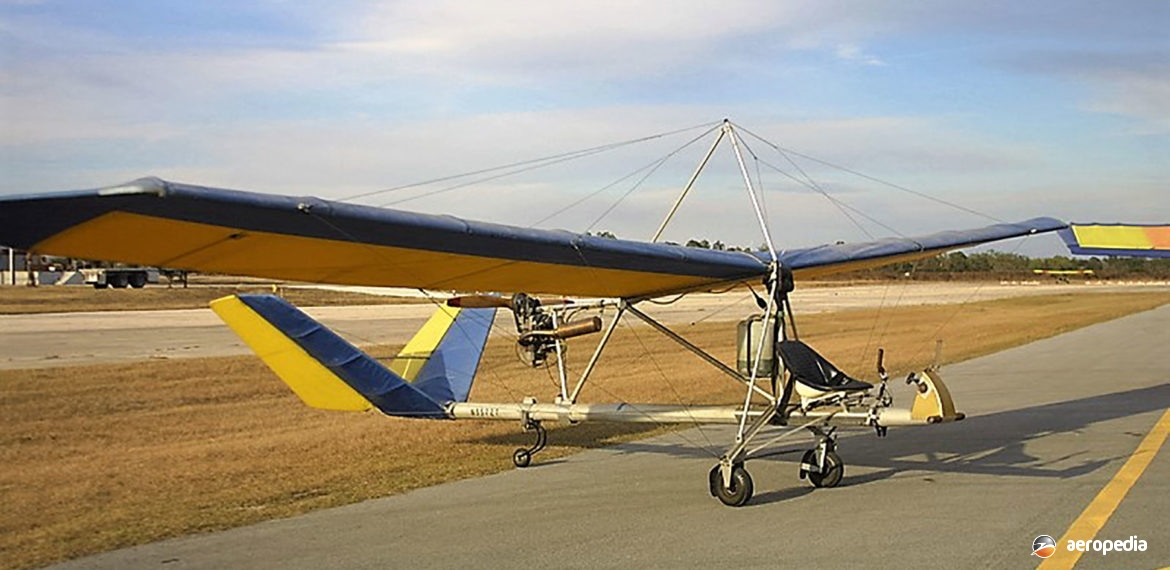Photograph:
Maxair Hummer (lightsportaircraftpilot.com)
Country of origin:
United States of America
Description:
Single-seat light sport aircraft
Power Plant:
One 16.4 kw (22 hp) Zenoah single-cylinder air-cooled engine
Specifications:
- Wingspan: 10.36 m (34 ft)
- Length: 5.48 m (18 ft)
- Wing area: 11.89 m² (128 sq ft)
- Max speed: 80 km/h (50 mph)
- Rate of climb: 122 m/min (400 ft./min)
- Take-off and landing speed 40 to: 45 km/h (25 to 28 mph)
- Stalling speed 35 to: 39 km/h (22 to 24 mph)
- Take-off run on grass: 122 m (400 ft)
- Landing run on grass: 18 m (60 ft)
- Sink rate: 69 m/min (225 ft/min)
- Fuel capacity: 19 litres (4.16 Imp gals)
- Empty weight: 77 kg (170 lb)
- Loaded weight: 168 kg (370 lb)
History:
The first commercial ultralight aircraft was the Scout designed by Ron Wheeler in Sydney, tested in 1972 and at that time put into series production. It was a light aircraft of aluminium tube construction with Dacron sail-cloth covering powered by a Victa lawn mower engine.
In 1977 Klaus Hill designed the Hummer microlight aircraft and this was produced by Maxair Aircraft Corp in the US, this later being developed to the Drifter series in 1983 with a Rotax 277 engine. It was a single-seat aircraft with a high-wing and wire bracing, fitted with a Zenoah single-cylinder engine with a belt reduction drive mounted on the wing on the upper root tube. It was able to be moved to deal with the C of G for pilots of different weights. Construction was aluminium with riveting. It was a two-axis aircraft using a V-tail and ruddervators. At least one Hummer was registered with the RAA as 10-1855 from December 1996 to March 2001 and examples have been registered in the United States, Canada and the United Kingdom.
Examples have been imported to Australia and New Zealand, registrations including ZK-FKH (c/n MAANZ272) registered in July 1984 and withdrawn in July 1999.

